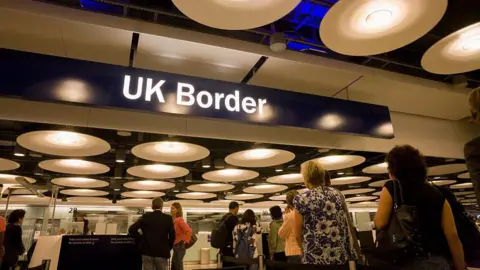The political landscape surrounding immigration in the United Kingdom has transformed significantly over the last few decades. A recent examination into the trends of legal migration reveals how the Labour Party aims to reverse a long-standing trajectory that has seen increasing numbers of migrants entering the UK. Historically, the shift in public sentiment and political policies related to immigration has become one of the most impactful social changes of the 21st century, highlighting a divide between the rhetoric of politicians and the reality experienced by citizens.
For over thirty years, the UK has seen a continuous increase in net migration, marking a drastic shift from the previous generations where migration numbers were relatively stable. Data indicates that during the thirty years before the mid-1990s, the number of people entering and leaving the UK was largely balanced, resulting in a net migration figure that hovered around zero. However, beginning in 1994, the trends changed dramatically; net migration escalated primarily during the early 2000s under a Labour government, particularly after the EU expanded and the UK did not impose restrictions on new citizens from those countries.
The issue of immigration became politically charged, culminating in the 2010 Conservative and Liberal Democrat coalition government promising to reduce net migration to the “tens of thousands” range, reminiscent of the immigration patterns of the 1990s. However, this pledge proved to be unrealistic, and subsequent data highlighted that immigration continued to exceed emigration significantly—by over 100,000 annually between 1998 and 2020, as evidenced in a research paper published by the House of Commons Library. This increasing trend caused immigration to be a focal point in the discourse leading up to the 2016 EU referendum.
Brexit intensified the scrutiny of immigration policies. With the UK’s exit from the EU, the government gained all necessary tools to exercise control over immigration without external influences. As a result, in 2021, the UK introduced a new immigration policy that favored a points-based system for work visas. Despite these changes, net migration figures soared, with estimates indicating a net migration of around 906,000 for the year ending June 2023, tapering slightly to 728,000 for June 2024.
The context of these figures prompts ongoing discussions about how the government aims to manage immigration moving forward. A key focus for ministers is reducing the influx of migrants classified as lower-skilled or care workers, predicating this reduction on the belief that current net migration levels are unsustainable. This sentiment stems from frustrations among voters about the pressures on public services and the economy attributed to high levels of immigration.
In light of these concerns, it is anticipated that the government will soon introduce measures to prioritize highly skilled and well-compensated migrants for permanent residency, thereby facilitating a quicker immigration process for them compared to lower-skilled immigrants. Such strategic shifts reflect the government’s recognition of the need for a balanced approach to immigration that seeks to appease both the demographic needs of the economy while addressing public skepticism about the sustainability of current levels of migration.
As the political landscape continues to evolve, the next steps will include provisions outlined in an upcoming immigration bill anticipated during the next King’s Speech. The government aims to establish clear evidence of reduced migration figures prior to the next general election, scheduled for 2028 or 2029. This political imperative drives the need to modify current immigration strategies to better align with public expectations and strengthen party credibility in an increasingly competitive political environment. The success or failure of these initiatives may significantly influence the Conservative Party’s future and broader political stability in relation to immigration policy in the UK.



